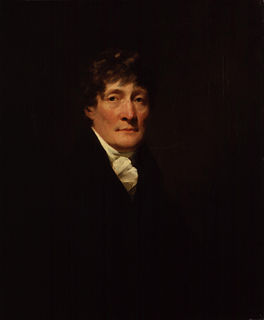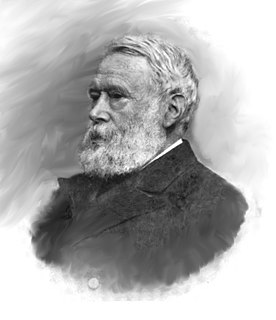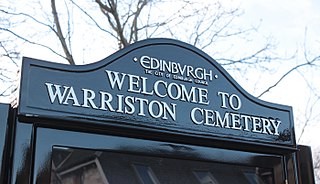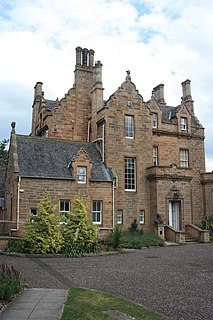Related Research Articles

William Forbes Skene WS FRSE FSA(Scot) DCL LLD, was a Scottish lawyer, historian and antiquary.

Henry Mackenzie FRSE was a Scottish lawyer, novelist and writer sometimes seen as the Addison of the North. While remembered mostly as an author, his main income came from legal roles, which led in 1804–1831 to a lucrative post as Comptroller of Taxes for Scotland, whose possession allowing him to follow his interest in writing.

Prof David Mather Masson LLD DLitt, was a Scottish academic, supporter of women's suffrage, literary critic and historian.

Her Majesty's Advocate, known as the Lord Advocate, is the chief legal officer of the Scottish Government and the Crown in Scotland for both civil and criminal matters that fall within the devolved powers of the Scottish Parliament. They are the chief public prosecutor for Scotland and all prosecutions on indictment are conducted by the Crown Office and Procurator Fiscal Service, nominally in the Lord Advocate's name.

Cosmo Nelson Innes FRSE was a Scottish advocate, judge, historian and antiquary. He served as Advocate-Depute, Sheriff of Elginshire, and Principal Clerk of Session.

Sir Daniel Wilson FSA (Scot) FRSE LLD was a Scottish-born Canadian archaeologist, ethnologist and author.

This article is a timeline of the history of Edinburgh, Scotland, up to the present day. It traces its rise from an early hill fort and later royal residence to the bustling city and capital of Scotland that it is today.

The Mound is an artificial slope in central Edinburgh, Scotland, which connects Edinburgh's New and Old Towns. It was formed by dumping around 1,501,000 cartloads of earth excavated from the foundations of the New Town into Nor Loch which was drained in 1765 and forms today's Princes Street Gardens.
Hugh Robert Mill was a British geographer and meteorologist who was influential in the reform of geography teaching, and in the development of meteorology as a science. He was President of the Royal Meteorological Society for 1907/8, and President of the Geographical Association in 1932.

Warriston Cemetery is a cemetery in Edinburgh. It lies in Warriston, one of the northern suburbs of Edinburgh, Scotland. It was built by the then newly-formed Edinburgh Cemetery Company, and occupies around 14 acres (5.7 ha) of land on a slightly sloping site. It contains many tens of thousands of graves, including notable Victorian and Edwardian figures, the most eminent being the physician Sir James Young Simpson.
James Mundell was a Scottish educator. He founded and ran the exclusive Mr Mundell's school in the West Bow of Edinburgh, from 1735 to 1762.

The Writers’ Museum, housed in Lady Stair's House at the Lawnmarket, on the Royal Mile in Edinburgh, presents the lives of three of the foremost Scottish writers: Robert Burns, Walter Scott and Robert Louis Stevenson.

James Pillans FRSE (1778–1864) was a Scottish classical scholar and educational reformer. He is credited with inventing the blackboard, but more correctly was the inventor of coloured chalk.
The firm of Alexander Mathieson & Sons was one of the leading makers of hand tools in Scotland. Its success went hand in hand with the growth of the shipbuilding industries on the Firth of Clyde in the nineteenth century and the emergence of Glasgow as the "second city of the Empire". It also reflected the firm's skill in responding to an unprecedented demand for quality tools by shipyards, cooperages and other industries, both locally and far and wide.
James Simpson Fleming FRSE (1828-1899) was a Scottish lawyer and banker. From 1858 to 1871 he was a partner in the legal firm of McGrigor, Stevenson & Fleming. In the 1870s he was responsible for introducing the Royal Bank of Scotland to London.

Canon Albert Ernest Laurie MC DD FRSE was a Scottish Episcopalian priest, and military hero of the First World War.

Thomas Nelson FRSE (1822–1892) was a Scottish businessman who joined the family publishing firm of Thomas Nelson in 1839 at which point it was renamed Thomas Nelson & Sons. In 1850 he invented an improved rotary printing press.
Donald Cumming Wilson FRSE FRIC (1898–1950) was a 20th-century Scottish manufacturing chemist. During the Second world war he controlled one of the main producers of military painkillers.
John Wilson OBE FRSE FRIBA FISA (1877–1959) was a 20th-century Scottish architect who as Chief Architect advised the Scottish Department of Health on hospital design.

East Preston Street Burial Ground is a burial ground in south Edinburgh holding graves from the 19th and 20th century. The graveyard is in the care of the City of Edinburgh Council. It stands at the junction of East Preston Street and Dalkeith Road. The property is a listed building.
References
- ↑ "H. & J. Pillans and Wilson - Edinburgh Southside Heritage Group". sites.google.com.
- ↑ The History of the Book in Scotland vol 3
- ↑ Edinburgh Post Office directory 1892
- ↑ "Book Details". www.abebooks.co.uk.
- ↑ "Hugh Pillans (Unknown-1852) - Find A Grave..." www.findagrave.com.
- ↑ Edinburgh Post Office directory 1911
- ↑ "Archives | The Scottish Printing Archival Trust". www.scottishprintarchive.org.
- ↑ Biographical Index of Former Fellows of the Royal Society of Edinburgh 1783–2002 (PDF). The Royal Society of Edinburgh. July 2006. ISBN 978-0-902198-84-5. Archived from the original (PDF) on 4 March 2016. Retrieved 5 August 2019.
- ↑ "DueDil". app.duedil.com.
- ↑ https://www.bloomberg.com/research/stocks/private/snapshot.asp?privcapId=140525 [ dead link ]
- ↑ scotsman (newspaper) 3 August 2006
- ↑ "Pillans & Wilson Ltd Opening Hours 2020 | The Time Now". www.thetimenow.com.